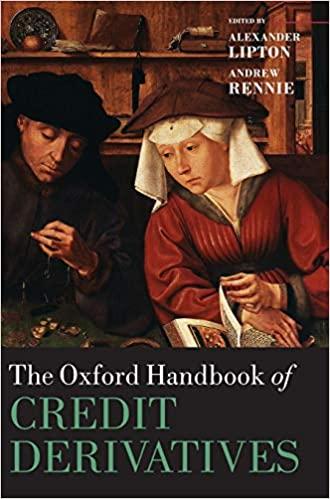Question
DMA Corporation has bonds on the market with 19.5 years to maturity, a YTM of 6.6 percent, and a current price of $1,043. The bonds
| DMA Corporation has bonds on the market with 19.5 years to maturity, a YTM of 6.6 percent, and a current price of $1,043. The bonds make semiannual payments and have a par value of $1,000. |
| What must the coupon rate be on these bonds? (Do not round intermediate calculations. Enter your answer as a percent rounded to 2 decimal places, e.g., 32.16.) |
| Coupon rate | % |
| Chamberlain Co. wants to issue new 18-year bonds for some much-needed expansion projects. The company currently has 9 percent coupon bonds on the market that sell for $1,045, make semiannual payments, and mature in 18 years. |
| What coupon rate should the company set on its new bonds if it wants them to sell at par? (Do not round intermediate calculations. Enter your answer as a percent rounded to 2 decimal places, e.g., 32.16.) |
| Coupon rate | % |
| Bond X is a premium bond making semiannual payments. The bond pays a coupon rate of 7 percent, has a YTM of 5 percent, and has 19 years to maturity. Bond Y is a discount bond making semiannual payments. This bond pays a coupon rate of 5 percent, has a YTM of 7 percent, and also has 19 years to maturity. The bonds have a $1,000 par value. |
| What is the price of each bond today? (Do not round intermediate calculations. Round your answers to 2 decimal places, e.g., 32.16.) |
| Price of Bond X | $ |
| Price of Bond Y | $ |
| If interest rates remain unchanged, what do you expect the price of these bonds to be one year from now? In eleven years? In sixteen years? In 16 years? In 19 years? (Do not round intermediate calculations. Round your answers to 2 decimal places, e.g., 32.16.) |
| Price of bond | Bond X | Bond Y |
| One year | $ | $ |
| Eleven years | $ | $ |
| Sixteen years | $ | $ |
| 16 years | $ | $ |
| 19 years | $ | $ |
| Yan Yan Corp. has a $4,000 par value bond outstanding with a coupon rate of 4.1 percent paid semiannually and 15 years to maturity. The yield to maturity on this bond is 4.3 percent. |
| What is the price of the bond? (Do not round intermediate calculations and round your answer to 2 decimal places, e.g., 32.16.) |
| Price | $ |
| Imagination Dragons Corporation needs to raise funds to finance a plant expansion, and it has decided to issue 20-year zero coupon bonds with a par value of $1,000 each to raise the money. The required return on the bonds will be 11 percent. Assume semiannual compounding periods. |
| a. | What will these bonds sell for at issuance? (Do not round intermediate calculations and round your answer to 2 decimal places, e.g., 32.16.) |
| Issue price | $ |
| b. | Using the IRS amortization rule, what interest deduction can the company take on these bonds in the first year? In the last year? (Do not round intermediate calculations and round your answers to 2 decimal places, e.g., 32.16.) |
| Interest deduction | |
| First year | $ |
| Last year | $ |
| c. | Repeat part (b) using the straight-line method for the interest deduction. (Do not round intermediate calculations and round your answer to 2 decimal places, e.g., 32.16.) |
| Interest deduction | $ |
| d. | Based on your answers in (b) and (c), which interest deduction method would the company prefer? | ||||
|
| Both Bond Sam and Bond Dave have 8 percent coupons, make semiannual payments, and are priced at par value. Bond Sam has six years to maturity, whereas Bond Dave has 15 years to maturity. |
| If interest rates suddenly rise by 2 percent, what is the percentage change in the price of Bond Sam and Bond Dave? (Negative amounts should be indicated by a minus sign. Do not round intermediate calculations and enter your answers as a percent rounded to 2 decimal places, e.g., 32.16.) |
| Percentage change in price of Bond Sam | % |
| Percentage change in price of Bond Dave | % |
| If rates were to suddenly fall by 2 percent instead, what would be the percentage change in the price of Bond Sam and Bond Dave? (Do not round intermediate calculations and enter your answers as a percent rounded to 2 decimal places, e.g., 32.16.) |
| Percentage change in price of Bond Sam | % |
| Percentage change in price of Bond Dave | % |
Step by Step Solution
There are 3 Steps involved in it
Step: 1

Get Instant Access to Expert-Tailored Solutions
See step-by-step solutions with expert insights and AI powered tools for academic success
Step: 2

Step: 3

Ace Your Homework with AI
Get the answers you need in no time with our AI-driven, step-by-step assistance
Get Started


